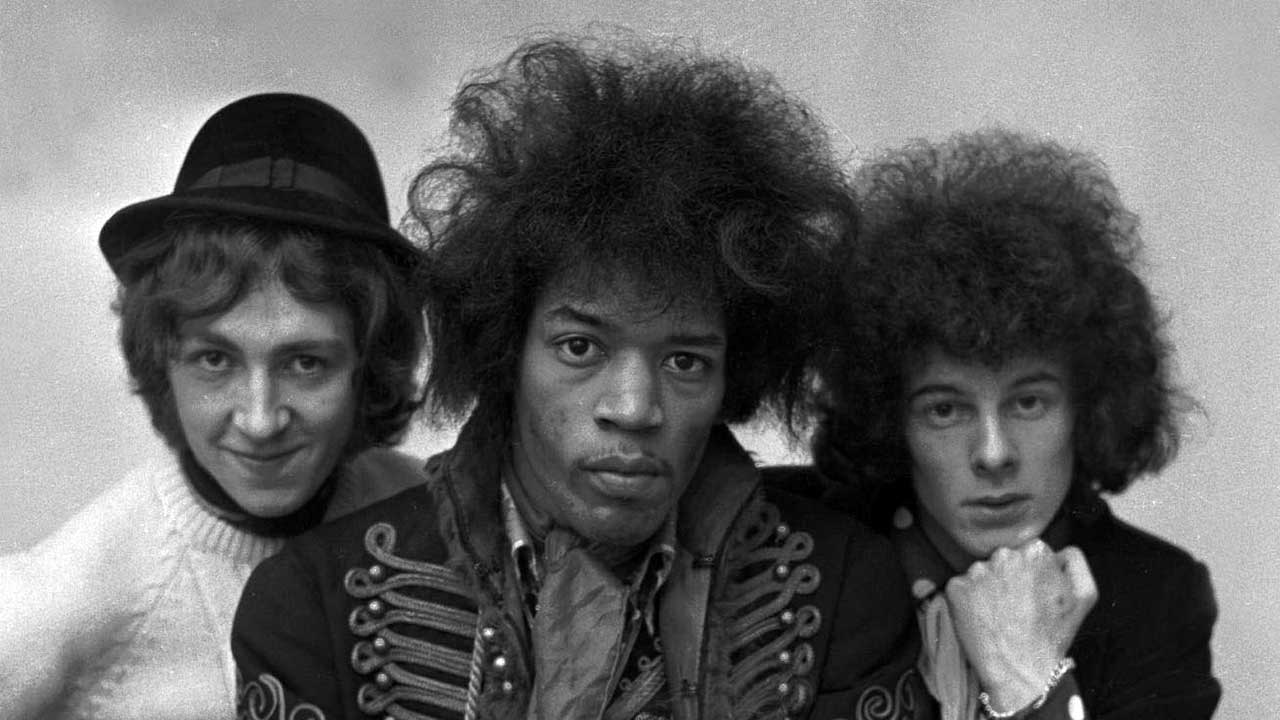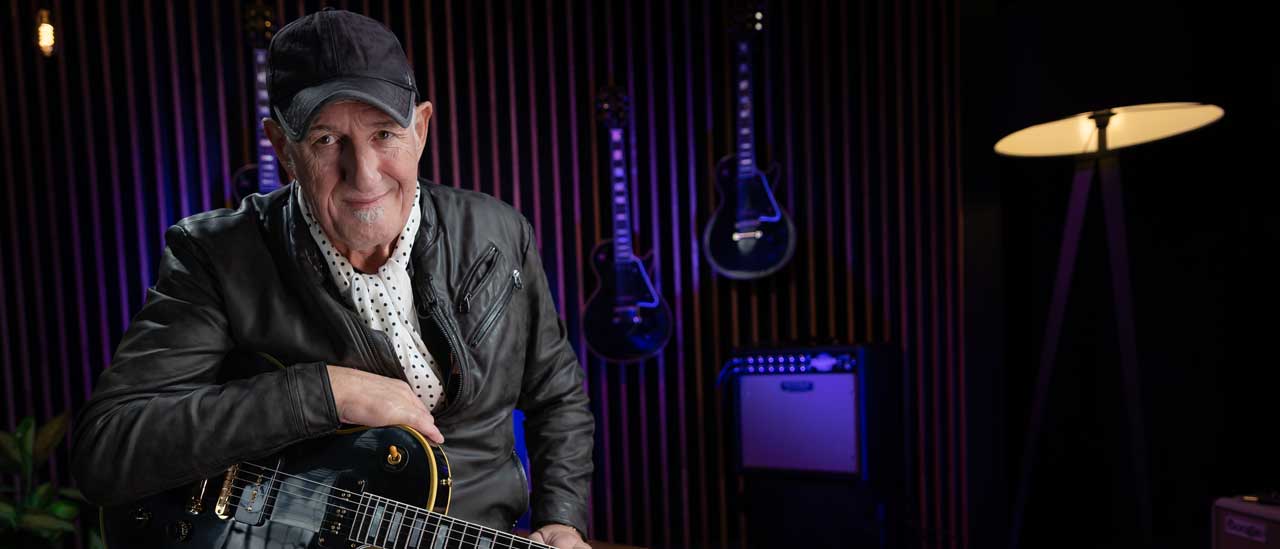Rock's Big Bang theory: Jimi Hendrix and the most influential debut album ever
Jimi Hendrix’s debut album, Are You Experienced, was pieced together in London in between dazzling live gigs that left the competition reeling. But the end results are still a revelation

Revered music writer Dave Marsh spoke for many when he called Are You Experienced, “The greatest, most influential debut album ever released” but, truth to tell, it was never really conceived as an album at all.
Released on May 12, 1967, Are You Experienced ushered in a new and exciting era where albums, not 45s, dominated rock music. Just three weeks after its release, The Beatles’ Sgt Pepper’s Lonely Hearts Club Band confirmed the album’s position. It had now become the definitive statement of a rock artist’s worth.
However, when Jimi Hendrix went into London’s De Lane Lea studios with producer Chas Chandler in October 1966, hit singles were still very much the goal, and the album, which would change it all, would eventually come together via a sequence of higgledy-piggledy recording sessions, strung out between live commitments.
The influences that Hendrix melded together to create the revelatory guitar and songwriting style on the album are many and include his early exposure to the blues, his years on the road as a guitar slinger for hire with Little Richard, the Isley Brothers et al and his fascination with Bob Dylan.
One song, however, would bring all those strands together, spark the world’s love affair with Hendrix and establish the template for his earth-shattering debut album. In the summer of 1966, when Hendrix was between jobs and low on cash, he could be found contemplating his options over a coffee at the Cock’n’Bull café on MacDougal Street in New York’s Greenwich Village.
He would stroll over to the café’s jukebox again and again and select Hey Joe by folkie Tim Rose. Copyrighted in 1962 by songwriter Billy Roberts, it was already one of the most recorded songs of the mid 60s, but whereas most bands treated it as an uptempo rock cut, Rose had slowed it down and introduced a distinctive walking bass line.
About a month later, Chas Chandler, bassist of The Animals, caught Hendrix’s set at Café Wha? in the Village, and heard him perform his version of Hey Joe. By happy coincidence, The Animals’ career was winding down and Chandler was looking to move into management and record production.
Sign up below to get the latest from Classic Rock, plus exclusive special offers, direct to your inbox!
He saw his golden opportunity in Hendrix, signed him up and flew him to London to launch a new career. But no one could predict the tumult that would follow Hendrix’s arrival in the UK on September 24, 1966. After touchdown at Heathrow, he got straight to it, jamming at the Scotch Of St James club.
Kit Lambert and Chris Stamp, The Who’s managers were in the audience and so impressed stumped up a £1,000 advance to tie Hendrix to their fledgling record company, Track Records. Soon he was also jamming with London based band The VIPS and Eric Burdon and The New Animals.
“He just grabbed hold of Vic Briggs’ guitar and said, ‘Do you mind if I have a jam?’,” remembers Eric Burdon, The Animals’ singer. “Barry Jenkins and Danny McCulloch from my band just leapt in and chased him on this incredible jam, and the sounds just rocketed around the room, like, ricocheted around the room. I was totally stunned.”
Before the month was out, he was performing with keyboard virtuoso Brian Auger at Blaises’ club, when guitarist Andy Summers, later of The Police, then in Zoot Money’s Big Roll Band walked in.
“He had a white Strat and as I walked in he had it in his mouth,” recalls Summers. “It was intense and it was really great. It kind of turned all the guitarists in London upside down at the time.”
Then on October 1, Chandler arranged for Jimi to jam with Cream at the Polytechnic of Central London.
“He did Killing Floor, a Howlin’ Wolf number I’ve always wanted to play, but which I’ve never really had the complete technique to do,” admitted guitarist Eric Clapton. “Ginger didn’t like it and Jack didn’t like it. They’d never heard the song before. It was just, well, he just stole the show.”
By this time, Noel Redding, attracted by a small ad in Melody Maker, had also jammed with Hendrix on a handful of instrumentals and found himself hired as bassist for the newly named Jimi Hendrix Experience.
The arrival of drummer Mitch Mitchell came next. On October 1, he was fired by R&B hitmaker Georgie Fame and five days later he auditioned for Hendrix. They meshed well but at the end, Hendrix simply said, “Okay. I’ll see you around.”
Before Mitchell could leave, though, Chas Chandler mentioned a potential gig in the middle of the month, supporting French pop idol Johnny Hallyday in Paris. Mitchell recalled: “I said ‘Okay’ and spent three days rehearsing. Then off we went and that was how it started.”
On October 23, they entered De Lane Lea with their newly acquired Marshall amplification rigs, to record Hey Joe. Chandler had recorded there often with The Animals, but Hendrix was unimpressed. He fought with Chandler about the difficulty of recording at the high volumes essential to the creation of his guitar sound.
“This is useless,” he fumed, “I’ll never be able to make a record here.”
Sensing that his control over his protégé could disappear before the sessions were under way, Chandler thought fast. “I’d just come from the Visa Office and I had his passport and a return ticket to America in my pocket. So I handed them to him and said, ‘Go on then. Fuck off back to America.’ And he just burst out laughing.”
With Chandler’s authority established, the session went ahead, but Mitch Mitchell immediately noticed that, “Hendrix was also shy about his voice. He didn’t want to be a singer. Chas really had to drag it out of him.”
On one take of Hey Joe, Hendrix is clearly dismayed. “Hey, make the voice a little lower and the band a little louder,” he says. By the end of the day, after what Redding remembers as almost 30 takes demanded by Chandler, the instrumental tracks were deemed satisfactory, but Jimi’s vocal was still missing and there were problems getting the performance from female vocal backing trio The Breakaways. Several sessions were required over the next few days in whatever studios Chandler could afford.
“I couldn’t even think of recording a B-side until I had more cash,” Chandler revealed later. “I told him, ‘There’s nothing going on the B-side, but one of your own songs’ because I had used up all my money doing Hey Joe.”
Hendrix rose to the challenge, writing Hey Joe’s B-side, Stone Free, at his London apartment the next evening and, by the time they could afford to return to De Lane Lea on November 2, he had also delivered Can You See Me, which would end up on the album. With its pile-driving riffs, sudden stops and Mitchell’s speedy drum fills, Hendrix was clearly finding his feet as a writer. The next track to be completed was Love Or Confusion.
Even as Hey Joe ascended the UK singles chart, on January 10, 1967, Hendrix wrote the lyric of The Wind Cries Mary immediately after a fight with his English girlfriend Kathy Etchingham, who revealed, “All the incidents in it were what happened: I smashed plates on the floor, he swept them up.”
The following day they were back in De Lane Lea, working on Purple Haze, 51st Anniversary and a demo of The Wind Cries Mary. According to Mitch Mitchell, “Hendrix came in, hummed us the (Purple Haze) riff and showed Noel the chord changes. I listened and went ‘OK, let’s do it.’ We got it on the third take.”
When Hey Joe hit Number 11 on January 16, Chandler had the leverage he needed to wring more cash out of Polydor Records (who were funding Lambert and Stamp’s Track imprint) and he moved Hendrix into Olympic Studios. Purple Haze was completed during their first Olympic session with engineer Eddie Kramer, who would become their long-time collaborator, on February 3.
Hendrix replaced his original vocal and enhanced the sound of his lead guitar with the newly invented Octavia effects unit, which fattened up every guitar note with a harmonising note one octave higher. Regrettably, a clash of commitments meant that Olympic was not always free when Chandler wanted it, so the recording of I Don’t Live Today, and a demo of the R&B flavoured Remember found them back at De Lane Lea in late February.
I Don’t Live Today is particularly memorable for its native American drum pattern and quadruple-layered guitar parts; two with wah-wah, one with distortion, and another with a sitar effect. The middle of March brought the official launch party for Track Records at London’s hip Speakeasy club, and was immediately followed by the UK release of Purple Haze and the signing of an American record deal with Reprise Records.
With Purple Haze bulleting up the charts, they returned to De Lane Lea on March 29, largely to focus on completing Remember and record Manic Depression. Chandler deemed the take of Remember “much too raggedy”, but Manic Depression, written in response to a jibe from Chandler who described him as sounding like a manic depressive, was clearly a winner and became the album’s opening cut.
With two hit singles to their name, it was now imperative that the album be completed, so on April 3, during a brief gap in touring commitments, they recorded Hendrix’s ethereal tribute to his deceased mother, May This Be Love, and the breathtaking title track with its backwards guitars.
“It was really Chas and Jimi’s working together that made everything so tight,” believes Eddie Kramer. “On the first album Jimi worked within a three to four minute song structure. That was Chas’s background, and Jimi had to compact his awesome imagination into that tight, polished format. It was very good for him.”
Are You Experienced was released in the UK by Track Records and peaked at Number 2, held off the top only by Sgt Pepper’s Lonely Hearts Club Band. By the time Reprise unveiled Are You Experienced to the American public on August 23, Hendrix had three UK hit singles under his belt. So Red House, Can You See Me and Remember were all removed to make way for Hey Joe, Purple Haze and The Wind Cries Mary. In this format, it reached Number 5, and went quadruple platinum.
Acclaim for the album has never faltered, with the US Library Of Congress selecting it in 2005 for permanent preservation in the National Recording Registry at the Library Of Congress in the United States.
So was Dave Marsh right to call it the greatest, most influential debut album released? That’s a matter of opinion, but another of Marsh’s assertions, that it was “the musical equivalent of the Big Bang,” still rings true for millions of rock music devotees worldwide.
Johnny is a music journalist, author and archivist of forty years experience. In the UK alone, he has written for Smash Hits, Q, Mojo, The Sunday Times, Radio Times, Classic Rock, HiFi News and more. His website Musicdayz is the world’s largest archive of fully searchable chronologically-organised rock music facts, often enhanced by features about those facts. He has interviewed three of the four Beatles, all of Abba and been nursed through a bad attack of food poisoning on a tour bus in South America by Robert Smith of The Cure.

